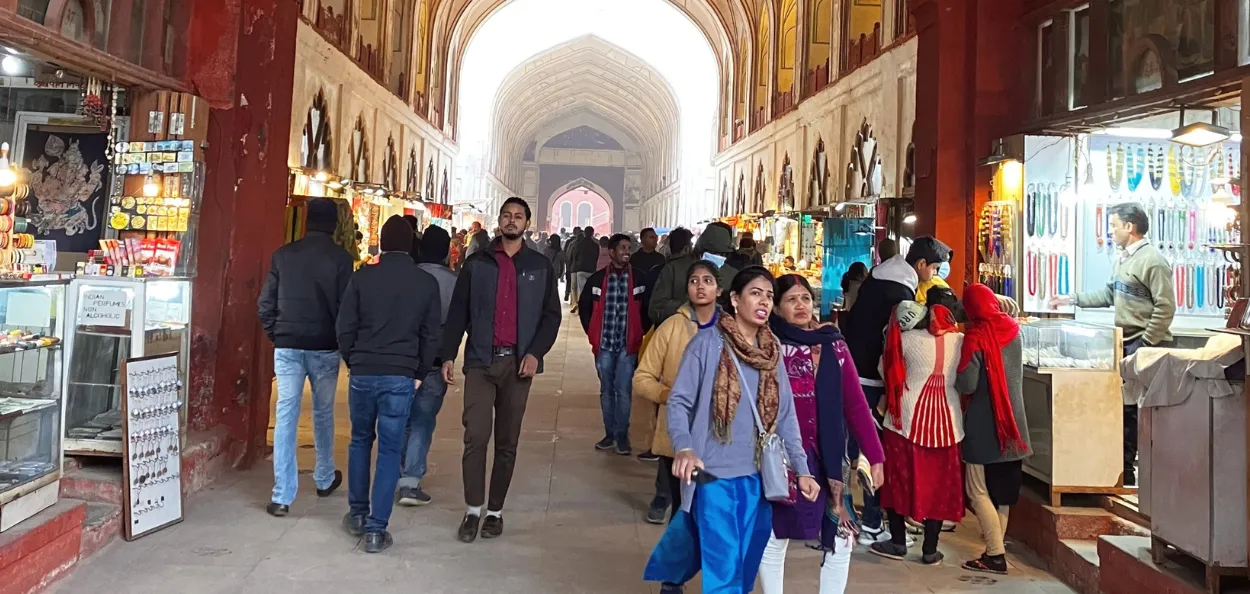
Shaista Fatima/New Delhi
On a balmy weekend morning, plan a trip to Delhi’s Red Fort, buy a ticket by scanning the QR code and enter the canopied lanes. Just a friendly reminder if one is visiting for the first time then beware of the "guides" who on a "nominal fee" of Rs 500 would be willing to show you the in and out of Red Fort.
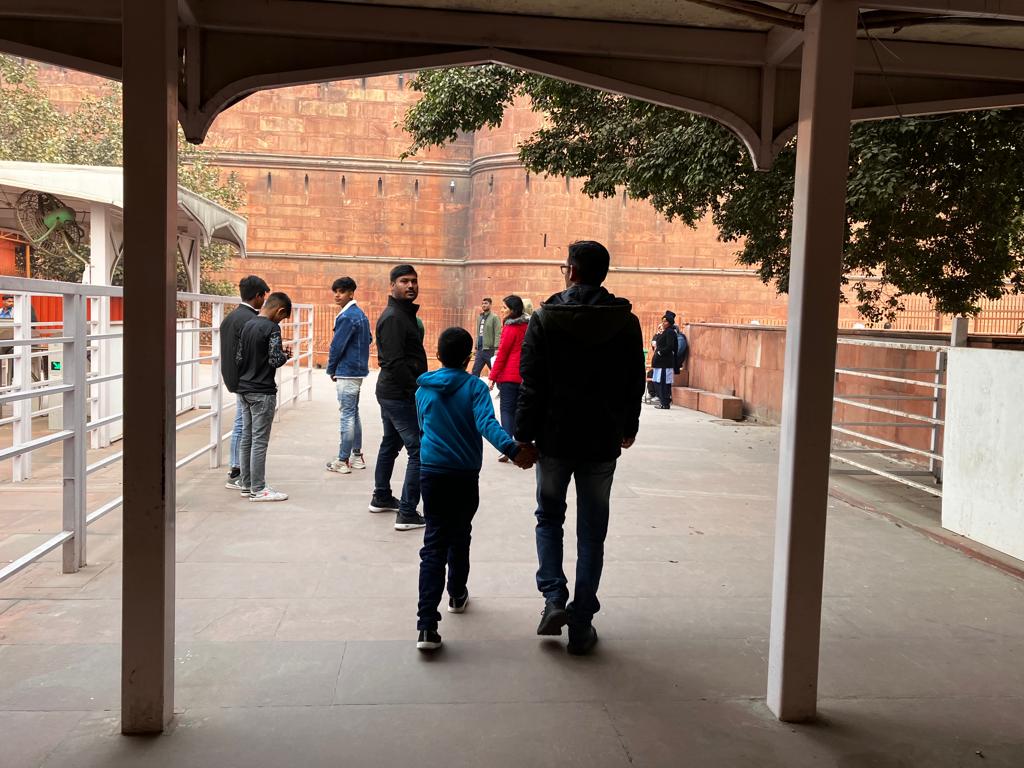
Just keep walking, take a right and behold, welcoming visitors at the Lahori Gate are the 18th century English canons who even today look majestic and life-like. Keep walking and on entering just take a left and stop to take in the beauty of more than two centuries old "original" Meena Bazaar.
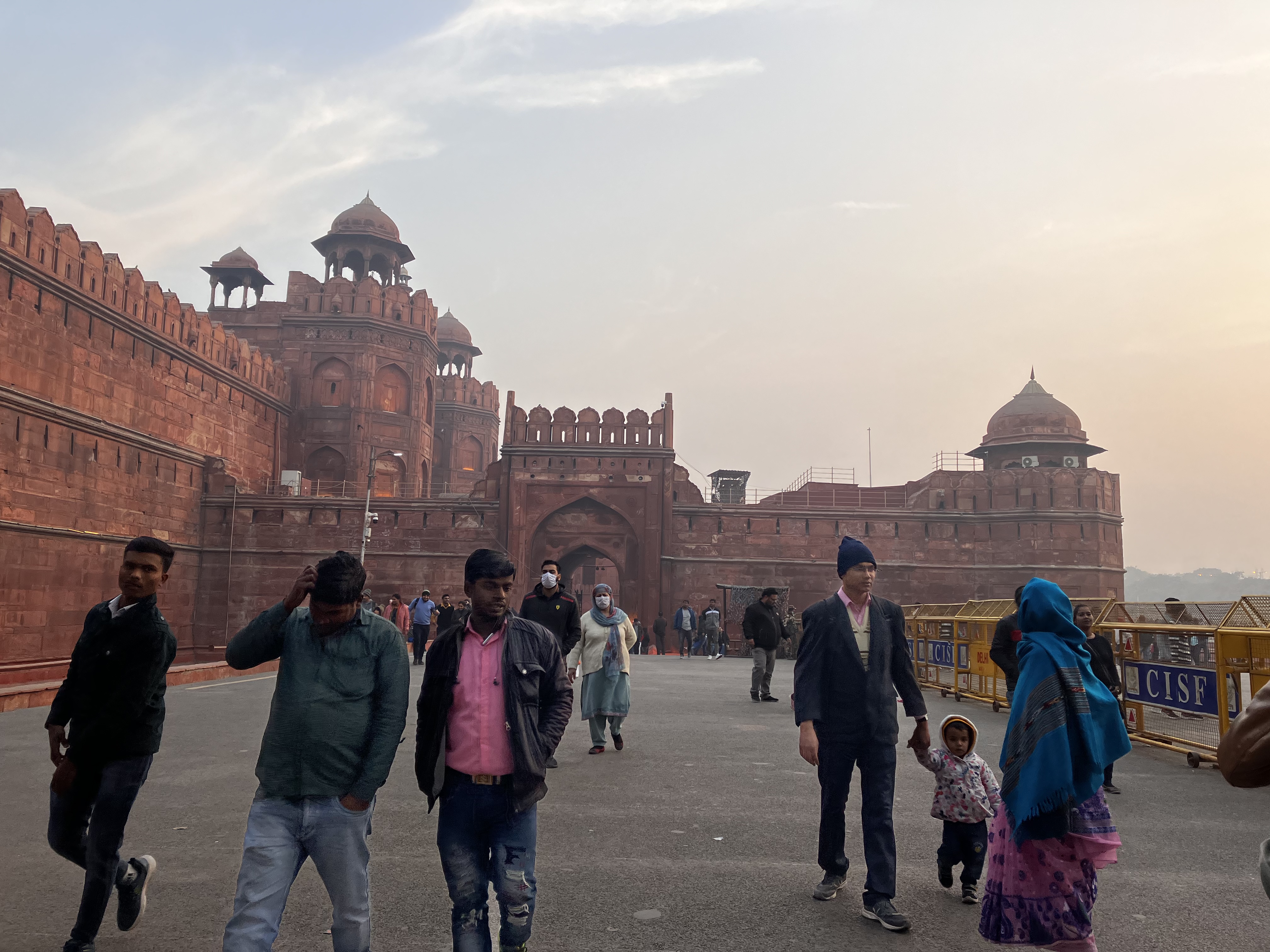
It is a 600 meters arcade made of 32 arched bays that have been serving as shops for times immemorial. Covered with arches and ancient designs of Pietra Dura (inlay art), this stretch offers the best market for Indian handicrafts and silver jewellery.
Popularly known as Chhata Chowk or Meena Bazaar where the words Chhata means covered and Meena means “women”, thus a covered shopping hub for the women of Mughal era. It was the brainchild of 17th century Mughal emperor Shah Jahan. A tabloid carved in red sandstone in Red Fort says ShahJahan witnessed a similar bazaar in Peshawar (now in Pakistan) and brought back this idea to Shahjahanabad’s (Mughal name for Old Delhi) Lal Quila (Red Fort).
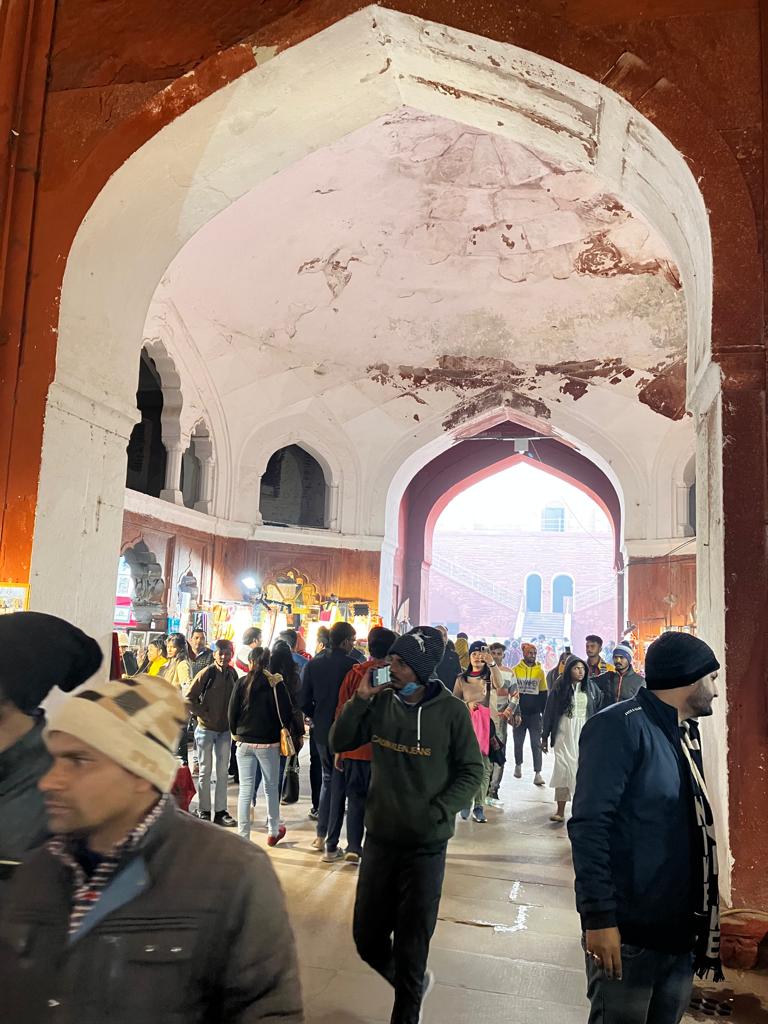
The lane is bustling with visitors. This dainty market has something to offer to everyone - from toddlers to men and women. This hub is a mordern day vintage get away.
Hind Kumar, a man in his mid sixties sitting in his arch bay shop number 12 at Meena Bazaar,, said he has inherited his shop. “Aab kya bataien kitne saal purani hai humari dukaan..100-200 saal maan lijiye…(now what should I tell you as to how old is my shop, some 100-200 years old maybe..).
Sitting at shop number 31 is Muneer, 45, who has grown up amidst this market and thus is aware of the intricacies. According to him it is, “the first ever shopping mall of India established pre independence”.
He adds, “A covered bazaar in 17th century India was extremely unusual and this one especially is unique in the Mughal architecture: The notion of a covered bazaar was stimulated by the one Shah Jahan saw in Peshawar In 1646 (now in Pakistan)…”.
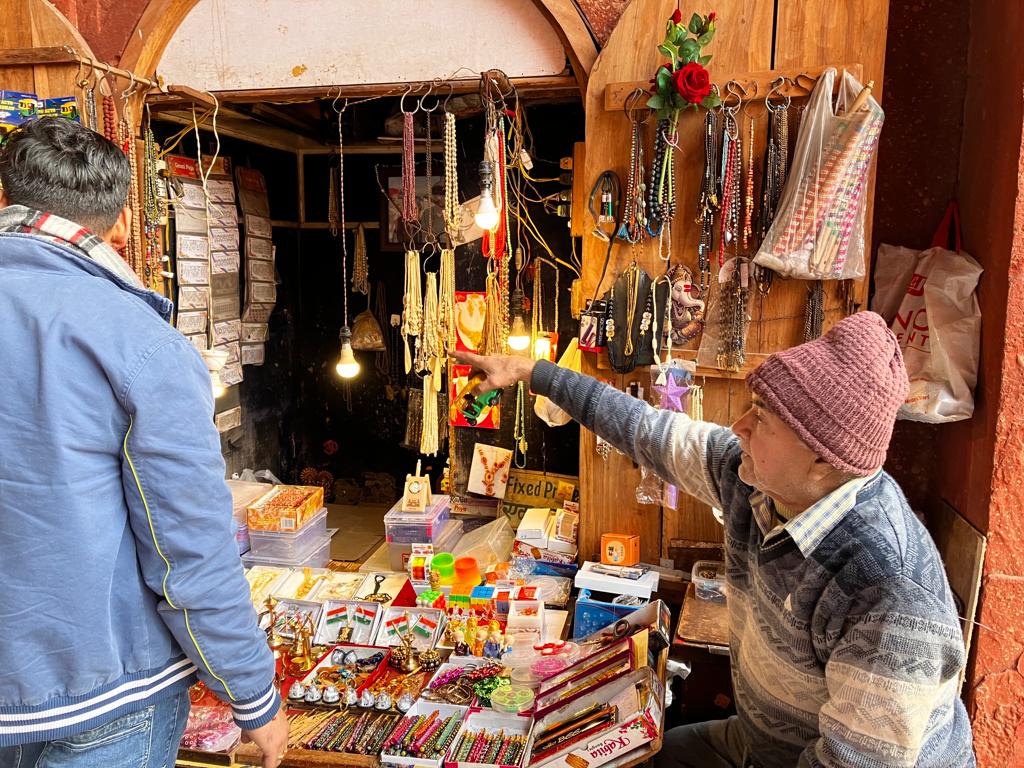
He says last two years have been harsh on him. However, despite low business, he says the shop is a legacy and he thus it is important to keep it going, “The shops remain shut near 26th January and then again for a month near Independence Day," he says.
This is for legacy and not for profit”, he adds.
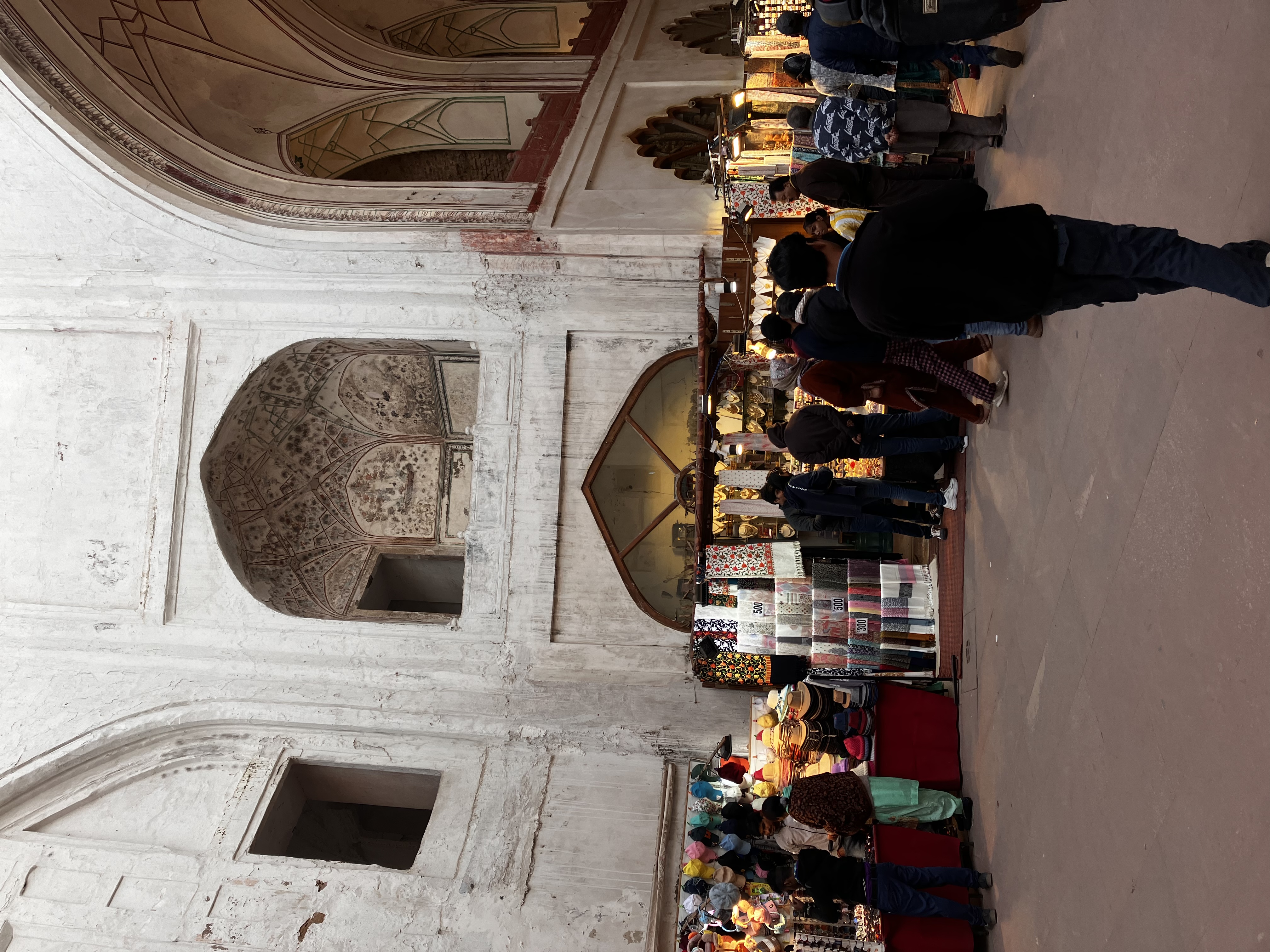
According to history books, “this bazaar was earlier known as "Bazaar-i-Musagoaf'”. In Shah Jahan's time, there were shops on both the upper and lower levels but today the shops are confined to ground floor only.
Muneer says once these shops catered to the luxuries of the imperial household as they specialized in silk, brocades, velvets, gold and silverware, jewelry and gems. Muneer in his storytelling manner continues, “Well..the word Meena or Mina itself means lady and some indefinite years back the shops were created to facilitate the shopping experience for women…” Muneer looks highly disappointed by the present day youth as he says, “it saddens my heart to see youngsters so aloof from their roots, one of India's finest handicrafts can be found here and that too at the cheapest price yet there aren't any buyers..
He said apart from Thursdays this market was for the ladies of the Mughal Empire.
He explains how this market is 300 years old and how his shop still keeps handmade crafts. Muneer is accompanied by Ashfaq and they both are the artisans for Kamini, a cheerful lady in her mid fifties, who inherited this kiosk from her forefathers, “We don’t have any papers or written documents declaring this shop as ours, but it is something that is Virasat (heirloom)..”, she adds.
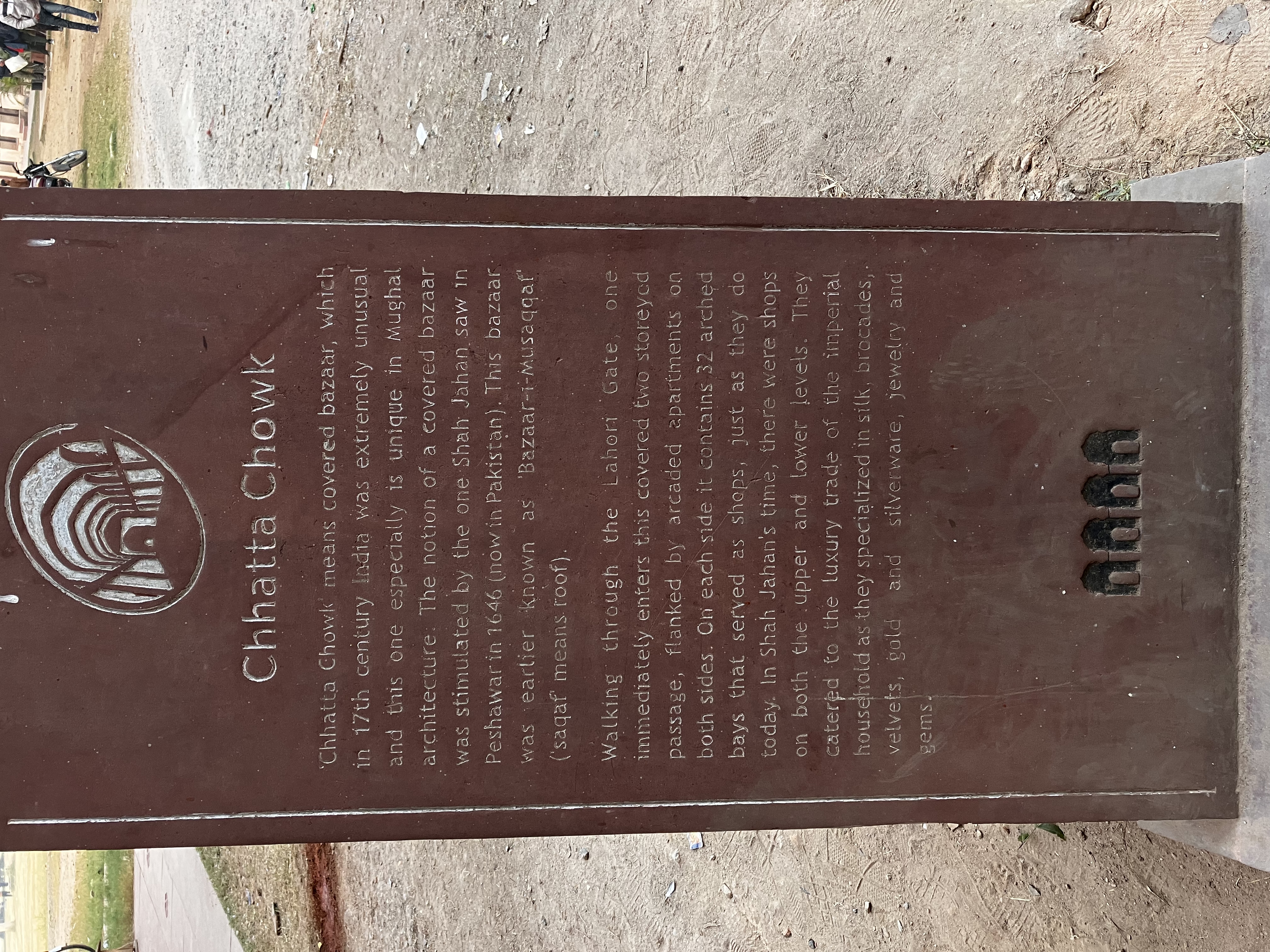
According to historians a covered bazaar, although of a design common to West Asia, was an innovation in India.
Shah Jahan had heard about the arcade in Isfahan, and it seems that the notion of a covered bazaar, stimulated by the one he saw in Peshawar in 1646. He instructed Mukarmat Khan who was supervising the construction of the Red Fort, to build a similar market there.
Shah Jahan was greatly impressed as its design was suitable for the hot climate of Delhi. The linearity of this market has formulated a strong longitudinal link and emphasized the straight axis with the Naubat-Khana & Diwan-i-Am.
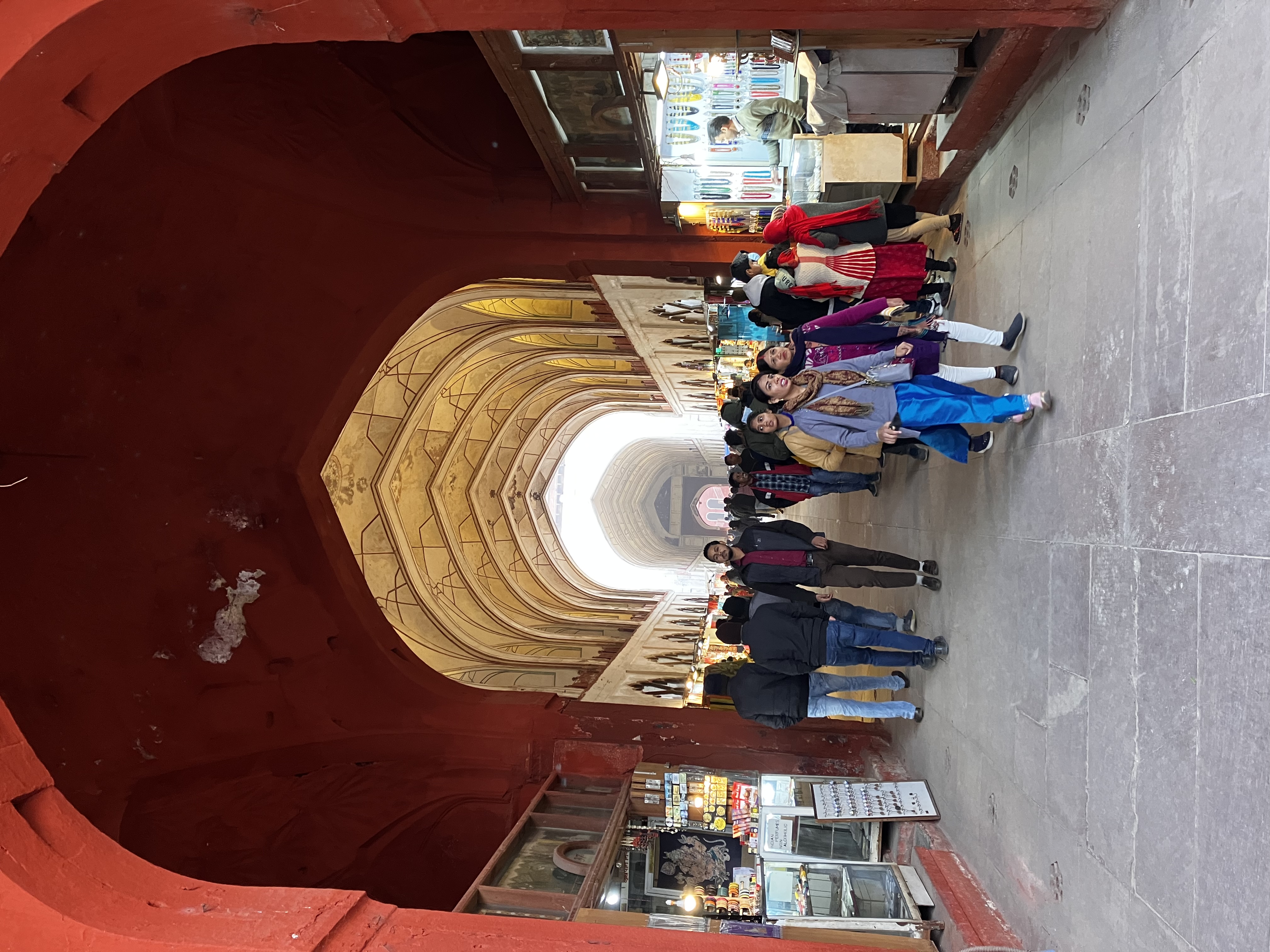
The bazaar is designed in a manner to allow sunlight and natural ventilation, the roofs are supported on a series of broad arches at regular interval, According to the history books honey comb (stucco) motifs have been universally used in Islamic art, structurally as well as ornamentally.
As it appears, the whole of the market, in the interior and on the exterior, was originally stuccoed, painted and gilded to give a gorgeous effect.
According to history books and live india website some 300 yearss ago this bazaar catered to the luxury trade of the imperial household, specialized in exquisite carpets, rugs, jajams and shatranjis (carpets); takia-namads (bolsters) and quilts; Shahtus and pashmina shawls; costumes; velvet pardahs and chiks; embroideries with zari and brocades; and a wide variety silks, woollens, velvets and taffetas which the Mughals used in their daily life; precious stones, exotic jewelry and indigenous ornaments; gold and silver utensils, fine wood and ivory work; brass and copper wares; fine arms and armaments; coloured ganjifas and indoor games; saffron, kasturi (musk) and other spices; and innumerous other stuff which could not be had even in the adjoining Chandani Chowk market.
It was privilege of the king that this rare and precious things were available only in the 'Fort market' for their exclusive choice.
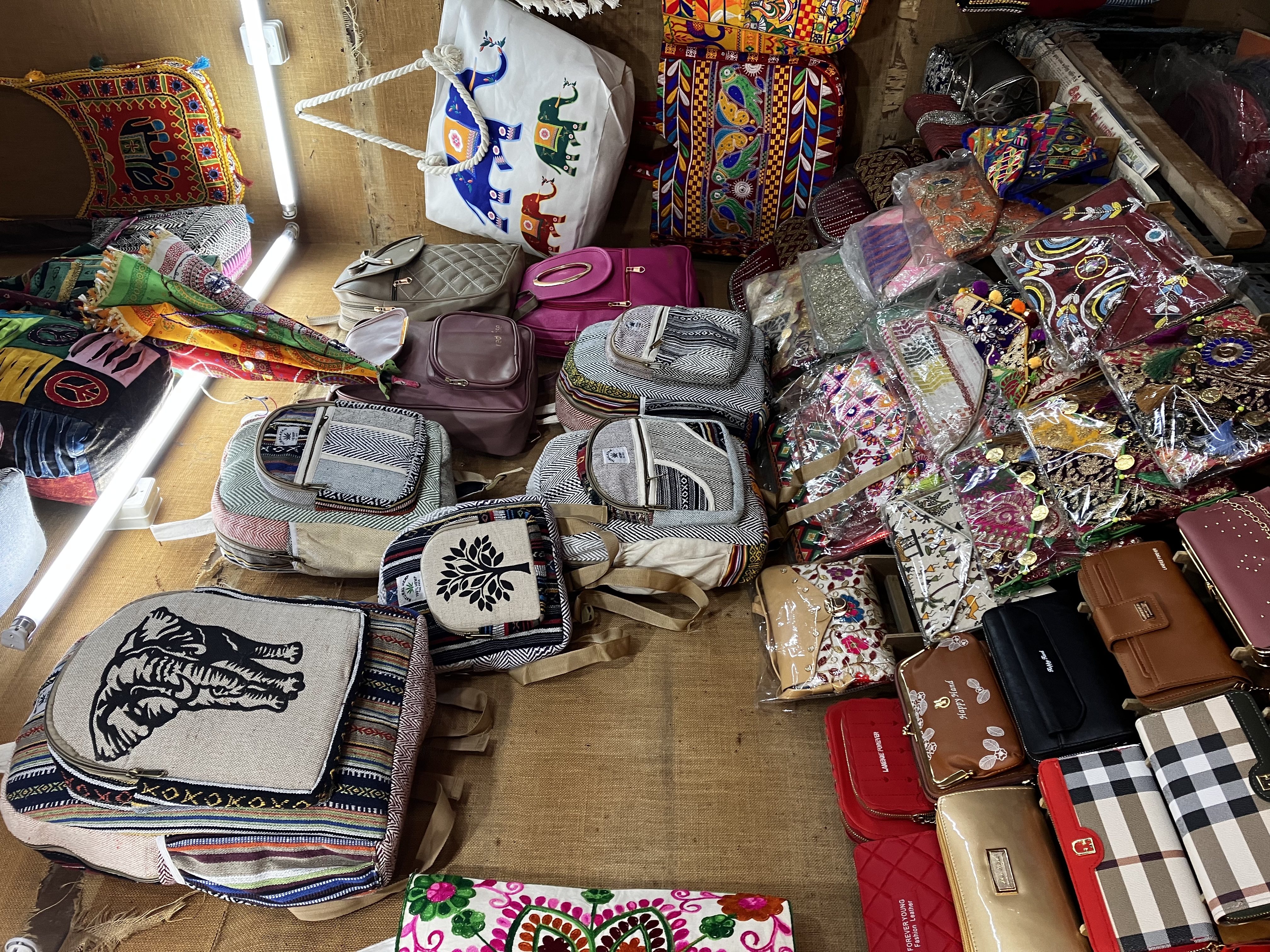
However, Meena bazaar bubbles with life, but with fewer jewelry shops and lighter Indian handicraft shops today. Few of them are linked to the big export houses. The prizes are quite reasonable and highly affordable.
The Chhatta Bazaar's renovation work is expected to restore its glory. Earlier there used to be teashops for the nobles to meet and discuss the latest court gossip and news of the kingdom.
Most common and sought after antique art "Pietra Dura" (inlay art or parchin kari) and Meenakari are still popular. While former is done on gem stones, the latter is done on metals.
Muneer told Awaz-the Voice, “the art forms originated from Rome in the 16th century and were later on adapted by many cultures.” Displaying Parchin Kari marble slate he says, "this has original gemstones and has healing properties, it relieves anxiety and extreme anger..". It's price is Rs 11,000.
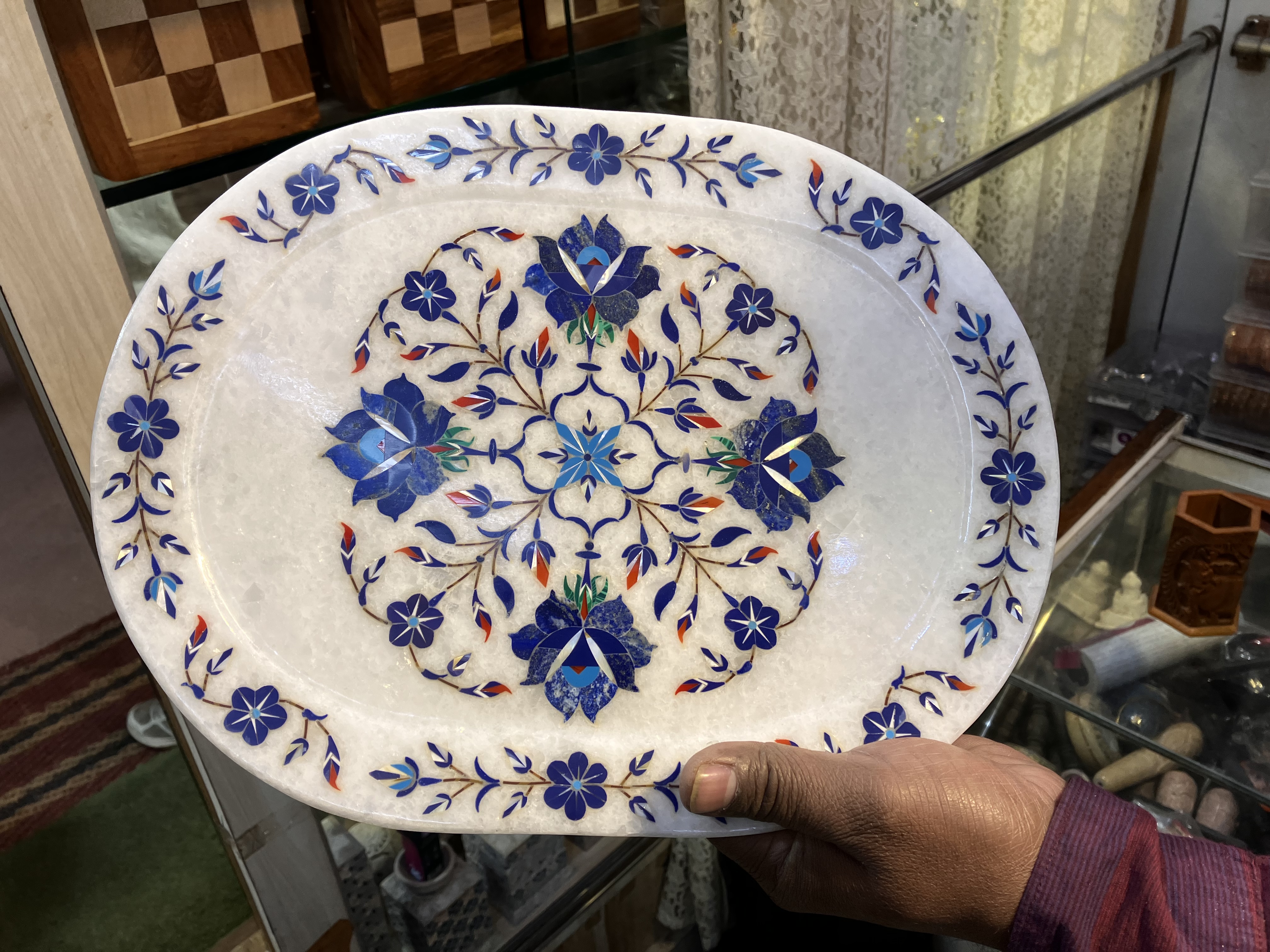
Meanwhile Kamini calls from inside of the shop, “Muneer that board in Hussain Sahab’s shop had an engraving, what year did it mention.?” Muneer says, “All the shops here are inherited by the respected families….” “This is the cheapest handicraft market (this was the fourth time he said so) in New Delhi as everyone here is a surplus exporter, thus you get antique items at the most reasonable prices..”
Muneer explains, “Back in the Mughal era there were only two type of art form “ParchinKari (Pietra Dura or Inlay Art) and Meenakari (MinaKari)”…” “While ParchinKari was done on a marble base, Meenakari was done on a metal surface, Gold was popular in those times, it shifted to silver and now it is mostly done on Bronze….” Muneer’s love for handicraft and knowledge about the same could be seen with his increasing pace of narration.
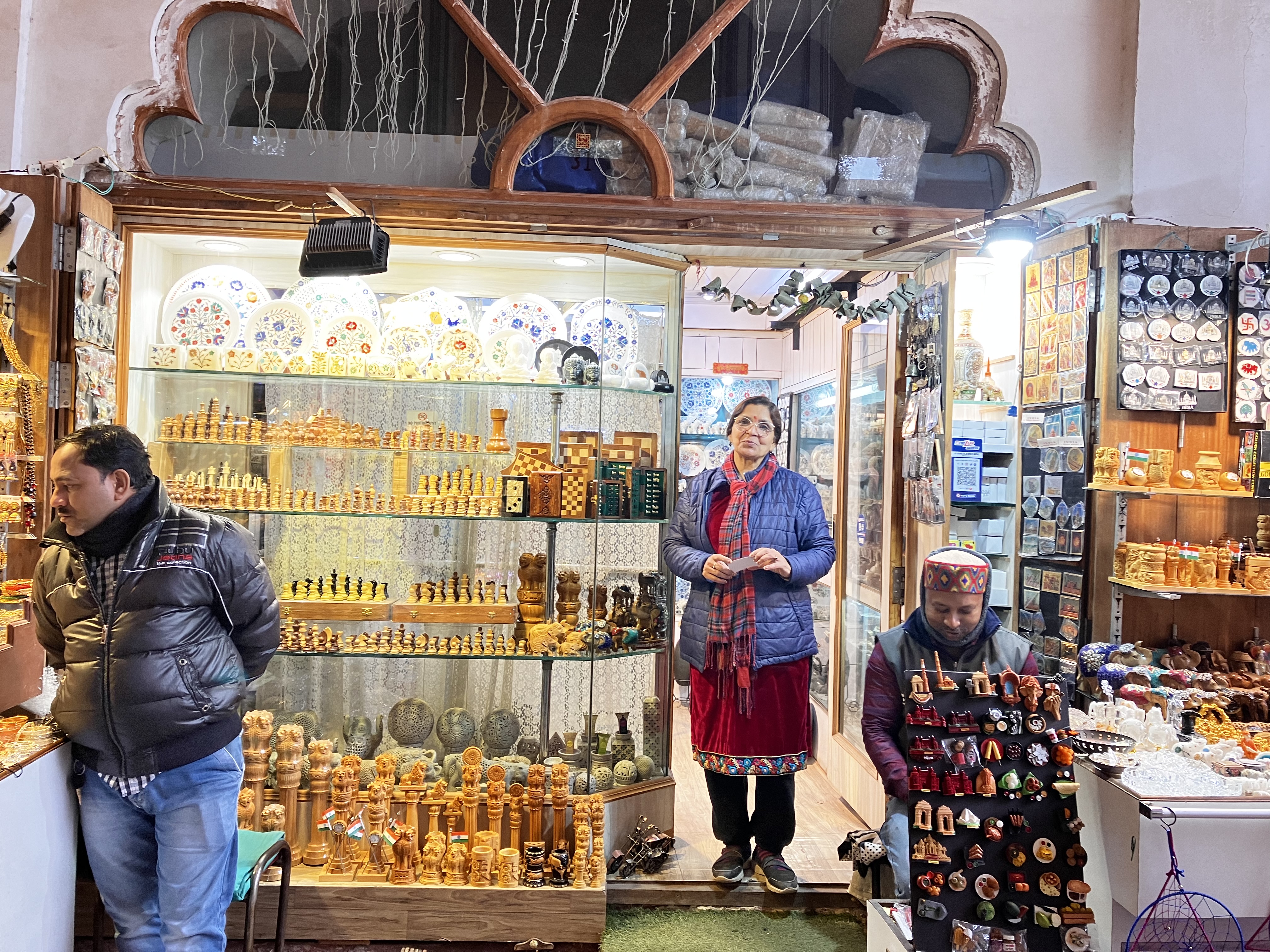
He went on to show an infinite calendar that was engraved on a bronze metal ring, (an example of Meenkari) and had three concentric circles that were rotated through a small screw in the center, “this is past (the outer circle), present(the mid circle) and future (innermost circle)..” The metal calendar had alphabets and digits engraved respectively that on following a particular permutation and combination showed the exact year and day, the cost of the handicraft was Rs 750 only.
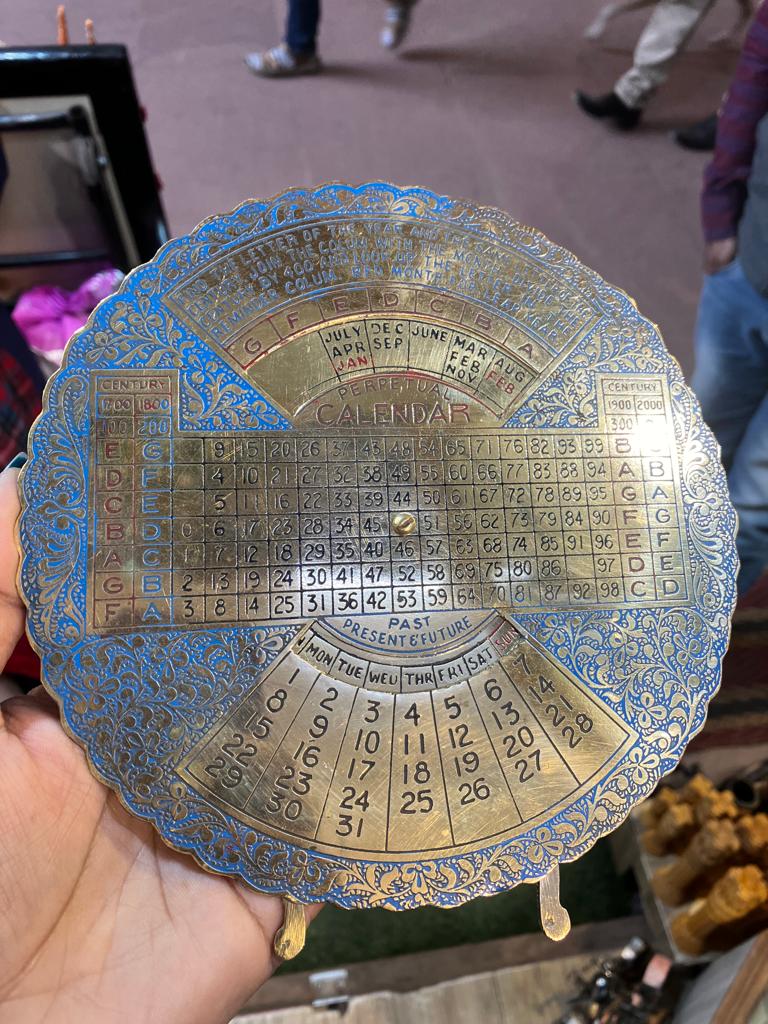
Mayank, the Secretary of the Meena Bazar told Awaz-the Voice about the Pagadi system and how the rent ranged from Rs16 to Rs 200.
“We have 48 shops here, and minimum age of each present day shop is around 125 years, it was build by the emperor for his daughters and they are all generational, I am the fifth generation here..they have been passed on as a legacy, the ASI is looking after the shops, they support us at every step, the upkeep of the monument and shops are handled very precisely, Currently, the ceiling’s restoration work is being done by the ASI, the rent remains the same as it was ehrn it was handed over by my forefathers, we representi India (to foreigners) so we have to be very careful..it's a responsibility,"
